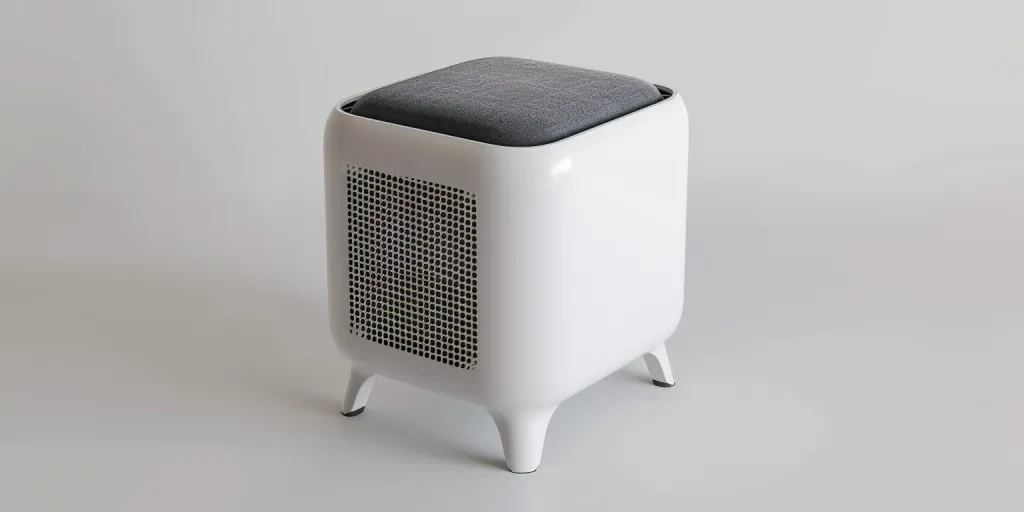Recent advancements in air purification technology have made it easier than ever to combat mold and improve indoor air quality. This article provides an in-depth analysis of the market, key factors to consider, and the value of selecting the right air purifier for mold, offering professional buyers the insights needed to make informed purchasing decisions.
Table of Contents:
– Market Overview of Air Purifiers for Mold
– In-Depth Analysis of the Air Purifier for Mold Market
– Key Factors When Selecting an Air Purifier for Mold
– Energy Efficiency and Operational Costs
– Regulatory Compliance and Certifications
– Design
– Conclusion
Market Overview of Air Purifiers for Mold
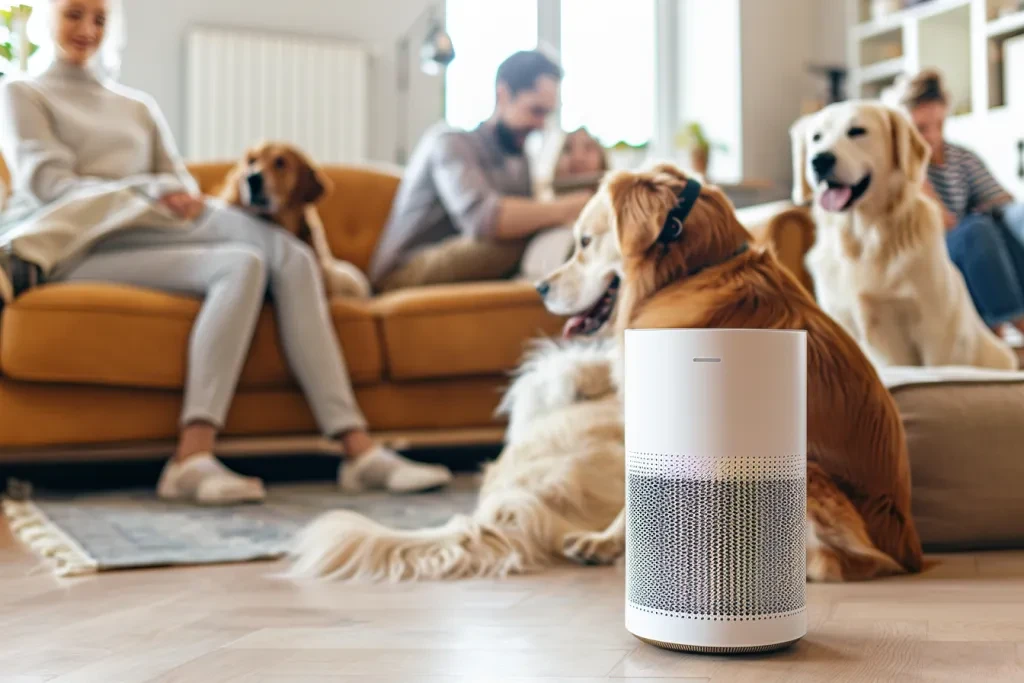
The global air purifier market is growing significantly, driven by increasing awareness of indoor air quality and rising respiratory diseases. The market expanded from USD 13.26 billion in 2023 to USD 14.19 billion in 2024 and is expected to reach USD 21.50 billion by 2030, reflecting a compound annual growth rate (CAGR) of 7.15%. Heightened concerns over air pollution and its health impacts fuel the demand for air purifiers, especially those targeting mold and other allergens.
In the Americas, the market shows robust growth due to increased awareness of indoor air pollution’s health effects, the presence of major manufacturers, and technological advancements. In the Asia-Pacific region, rapid urbanization, rising pollution levels, and increasing per capita income drive demand. Countries like China, Japan, and India face severe air quality issues, making air purifiers essential household items. Europe also sees growing adoption due to heightened consumer awareness and supportive government regulations.
The market is segmented by technology, including activated carbon, high-efficiency particulate air (HEPA), and ionic filters. HEPA filters, effective in trapping mold spores and other fine particles, are a popular choice for consumers. The market is also divided by type, with in-duct and stand-alone units, and by distribution channels, including offline and online sales. Commercial, industrial, and residential applications all contribute to the market’s growth, with residential use being the most significant segment.
In-Depth Analysis of the Air Purifier for Mold Market
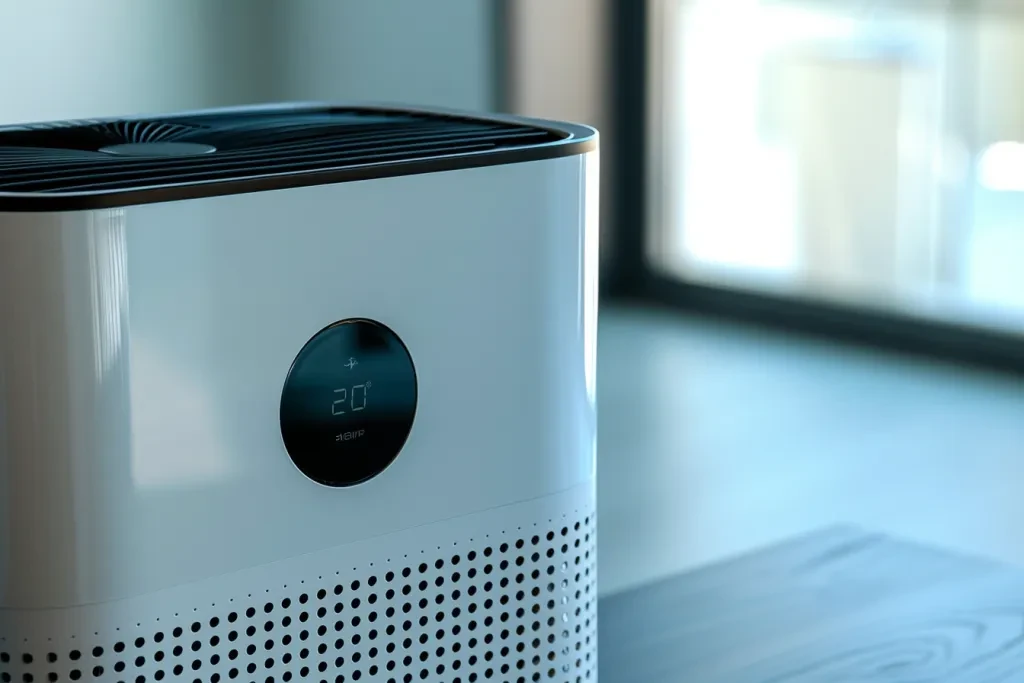
Air purifiers designed to combat mold are becoming increasingly sophisticated, incorporating advanced filtration technologies. Key performance benchmarks for these devices include the ability to remove mold spores, dust, and other allergens. HEPA filters, which can capture particles as small as 0.3 microns with 99.97% efficiency, are critical components. Activated carbon filters are also used to remove odors and volatile organic compounds (VOCs), further improving indoor air quality.
Leading brands such as Dyson, Honeywell, and Philips dominate the sector, leveraging their technological expertise and strong brand recognition. These companies continually innovate, introducing features like smart sensors and IoT connectivity to monitor and improve air quality in real-time. Economic factors, such as rising disposable incomes and increasing healthcare costs, drive consumers to invest in air purifiers for healthier living environments.
Consumer behavior shows a growing preference for high-quality, energy-efficient products. The demand for portable and easy-to-use air purifiers is rising, particularly in urban areas. Distribution channel preferences vary, with many sales occurring online due to convenience and detailed product information. However, brick-and-mortar stores remain important for consumers who prefer to see and test products before purchasing.
Recent innovations include the integration of ultraviolet (UV) light technology to kill mold spores and bacteria and the development of more efficient, longer-lasting filters. Digitalization plays a significant role, with smart air purifiers equipped with apps and voice control features becoming increasingly popular. Social trends, such as the growing emphasis on wellness and a healthy lifestyle, further boost the market.
Customer pain points include the high initial cost and ongoing maintenance expenses of air purifiers. To address these concerns, companies focus on developing cost-effective solutions and offering financing options. Brand positioning strategies highlight the health benefits and advanced features of their products, while differentiation strategies emphasize superior filtration technology, energy efficiency, and design. Niche markets, such as air purifiers for individuals with severe allergies or asthma, are also targeted to cater to specific consumer needs.
Key Factors When Selecting an Air Purifier for Mold
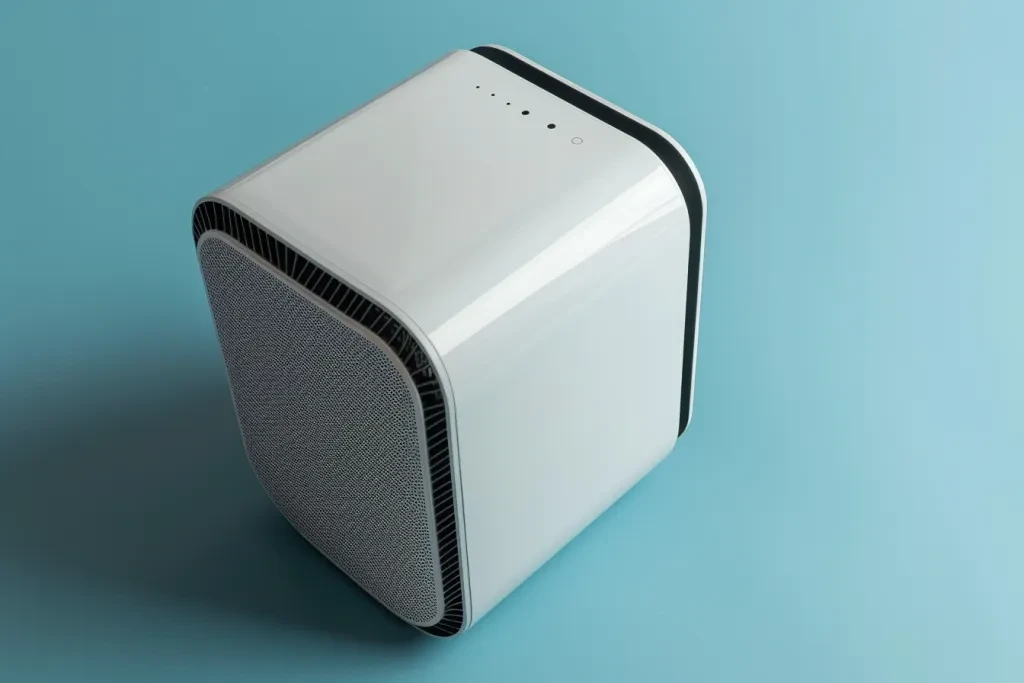
Choosing the right air purifier for mold involves evaluating various technical specifications and functionalities. Below, we delve into the key factors to consider, providing an in-depth look at what makes an air purifier effective against mold.
HEPA Filters
High Efficiency Particulate Air (HEPA) filters are crucial when selecting an air purifier for mold. These filters can remove 99.97% of particles as small as 0.3 microns, making them highly effective at capturing mold spores, which typically range from 1 to 30 microns in size.
The design of HEPA filters involves randomly arranged fibers that create a dense mat through which air passes. This structure enables the filter to trap particles through interception, inertial impaction, and diffusion. Interception captures particles that come within one particle radius of a fiber; inertial impaction traps larger particles that cannot navigate around the fibers, and diffusion captures the smallest particles via erratic movement.
When choosing a HEPA filter, ensure it meets the US Department of Energy (DOE) standards, which specify the 99.97% efficiency at 0.3 microns. Filters labeled as “True HEPA” are preferable as they meet these stringent standards.
UV Light Air Cleaners
Ultraviolet (UV) light air cleaners are another effective technology for combating mold. These devices utilize UV-C light, which has germicidal properties capable of destroying the DNA and RNA of mold spores, rendering them harmless.
UV light air cleaners often incorporate UV lamps that emit light at specific wavelengths, typically around 254 nanometers, which is most effective for germicidal activity. The integration of UV light with HEPA filtration systems enhances the overall effectiveness, as the UV light can target and neutralize spores trapped by the HEPA filter.
When selecting a UV light air cleaner, consider the lamp’s power output and the air purifier’s design to ensure it can effectively treat the air volume in your space. Models with higher intensity UV lamps and longer exposure times generally provide better performance.
Ionic Air Purifiers
Ionic air purifiers, or ionizers, use negative ion generators to charge airborne particles, causing them to settle out of the air and onto surfaces. Some models incorporate electrostatic systems to trap these charged particles on oppositely charged metal plates.
While ionic air purifiers can reduce mold spores in the air, they do not capture or neutralize them as effectively as HEPA or UV systems. However, they can be useful as a supplementary technology, particularly in conjunction with other air purification methods.
Consider the maintenance requirements of ionic air purifiers, as the metal plates need regular cleaning to maintain efficiency. Additionally, ensure the unit does not produce ozone, as this can be harmful in high concentrations.
Ozone Air Cleaners
Ozone air cleaners generate ozone (O3) to neutralize airborne contaminants, including mold spores. The extra oxygen atom in ozone can detach and react with pollutants, breaking them down into less harmful substances.
While effective in industrial applications, ozone air cleaners are generally not recommended for residential use due to the potential health risks associated with ozone exposure. Ozone can irritate the respiratory system and exacerbate conditions such as asthma.
If considering an ozone air cleaner for a large industrial space, ensure it meets safety standards and is used in a controlled environment. The unit should have features to monitor and regulate ozone levels to prevent harmful exposure.
Electronic or Electrostatic Air Cleaners
Electronic or electrostatic air cleaners employ high-voltage wires to charge particles passing through the purifier. These charged particles are then captured by oppositely charged metal plates within the unit.
These air cleaners are effective at capturing a wide range of particle sizes, including mold spores. However, they require regular maintenance to clean the metal plates and maintain performance. Additionally, they may produce some ozone as a byproduct, so it’s important to choose models with minimal ozone generation.
Consider the airflow capacity and the size of the area you need to purify when selecting an electronic air cleaner. Units with higher air processing rates will be more effective in larger spaces.
Energy Efficiency and Operational Costs
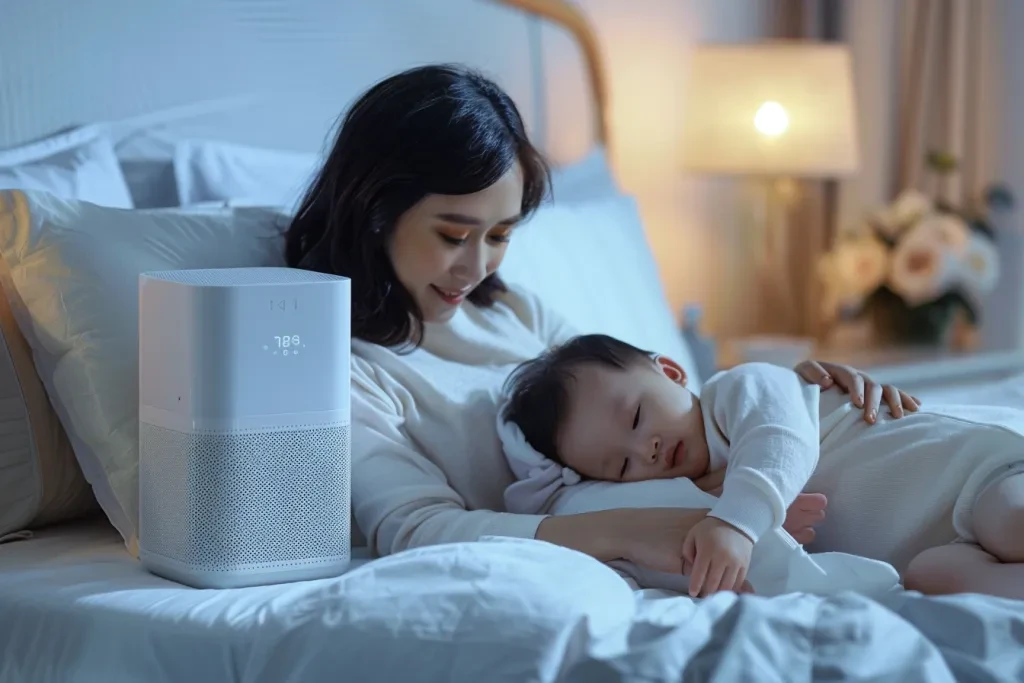
Energy efficiency is a critical factor in selecting an air purifier, especially for continuous operation. Air purifiers with Energy Star certification are designed to be more energy-efficient, reducing operational costs over time.
Evaluate the power consumption of different models and consider the long-term costs associated with filter replacements and maintenance. Some air purifiers offer reusable filters that can be cleaned and reused, which can be more cost-effective than disposable filters.
Additionally, consider the noise level of the air purifier, particularly if it will be used in residential or office environments. Models with quieter operation are preferable for maintaining a comfortable living or working space.
Regulatory Compliance and Certifications
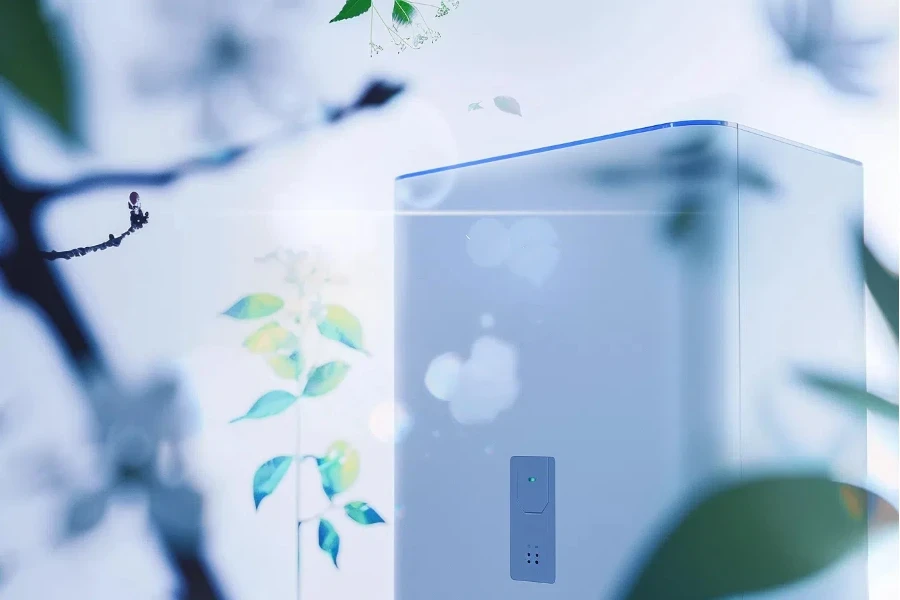
Ensure the air purifier you choose complies with relevant safety and performance standards. Look for certifications such as UL (Underwriters Laboratories), CE (Conformité Européenne), and AHAM (Association of Home Appliance Manufacturers) to verify the unit’s safety and efficiency.
HEPA filters should meet DOE standards, while UV light air cleaners should comply with relevant guidelines for UV-C light exposure. Ionic and electronic air purifiers should be tested for ozone emissions to ensure they fall within safe limits.
Design
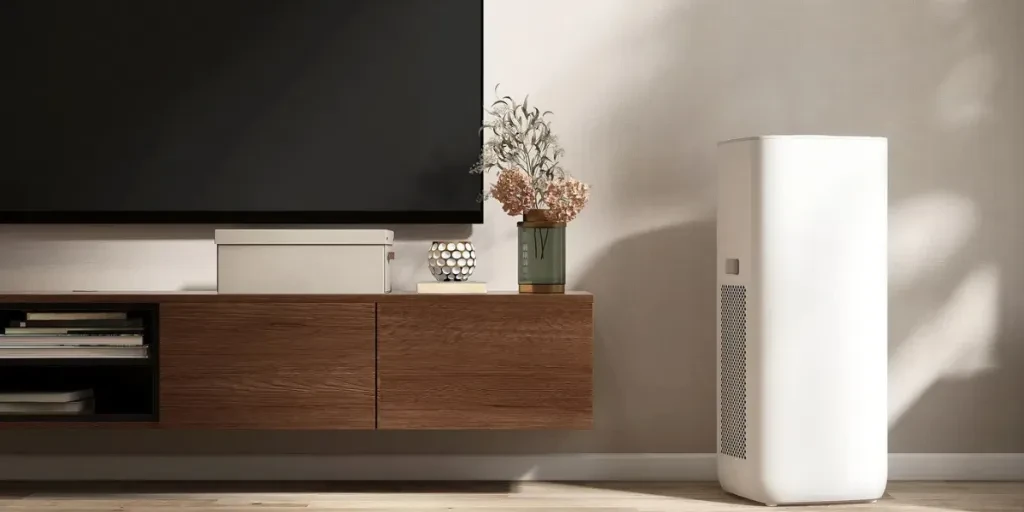
The design of an air purifier can impact its integration into space. Modern air purifiers come in various sizes, shapes, and finishes to match different interior styles. Consider the unit’s footprint and whether it can be easily placed in the desired location without obstructing movement or access.
Some models offer smart features, such as app connectivity and real-time air quality monitoring, which can enhance user experience and convenience. These features allow you to monitor and control the air purifier remotely, ensuring optimal performance at all times.
Conclusion
In summary, selecting the right air purifier for mold involves evaluating factors such as filtration efficiency, technology type, energy consumption, regulatory compliance, and design. By considering these elements, you can choose an air purifier that effectively reduces mold spores and improves indoor air quality, ensuring a healthier environment for all occupants.
